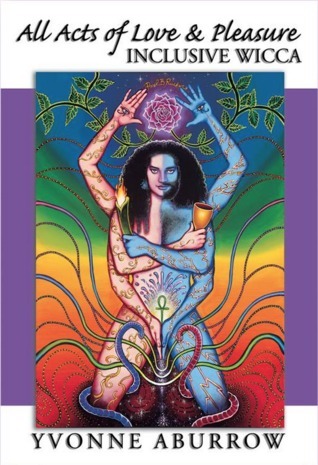Do deities have gender? What about sexual characteristics? As non-physical (and some might say, metaphorical) beings, they can manifest in whatever form they want.
Definitions
Deities are the identities or personalities of places, lands, natural phenomena, and cosmic forces. Sometimes they have an anthropomorphic interface: that’s to say they sometimes manifest in human form.
Sex is biological though not actually binary. There are seven different biological characteristics that are used to determine sex. Any of them can vary. Thus the division of sex into male and female is arbitrary and socially constructed. And let’s not forget about intersex people. Since deities don’t normally take physical form, I’m not sure they can be said to have a sex.
Gender is your identity and there are literally hundreds, even thousands, of different gender identities. There are deities all over the map when it comes to gender identity.
Deities, who are social beings, or at least their anthropomorphic aspects are, can express any of these myriad different gender identities, sometimes more than one at a time, sometimes none. This is one of the reasons why I’m a polytheist.
There are numerous deities who manifest as more than one gender, or are transgender, genderqueer, gender-fluid, or have same-sex partners.

“Hapi, the god of the Nile, is depicted in hieroglyphics as an intersex person with a ceremonial false beard and breasts. While generally referred to as male, the god also was also considered a symbol of fertility.”
Source: 52 Queer Gods who ruled ancient history (Pride.com)
The excellent book Cassell’s Encyclopedia of Queer Myth, History, and Spirit has details of numerous queer deities and saints.

If you enjoyed this post, you might like my books.



I always wonder why people transfix on the gender of deities and spirits. I think their forms are far more fluid than our wildest imaginings. But I also wonder why people’s deity forms are humanoid. If we let go of expectations around form, it’s amazing what “party-hat” the Divine can show up wearing. Thx for writing about this. 💙
LikeLiked by 1 person
We imagine the divine and deities in our own image!
I’m sure they are much more fluid than we realize.
The other day we caught a bit of a TV programme about eels. Apparently they are sexless for the first part of their lives and only later acquire biological sex.
LikeLiked by 1 person
Pingback: Transgender Day of Visibility | Dowsing for Divinity
My deities are rivers and oceans, storms and summer breezes, sun and moon and ancient forests. They are more like ecosystems than individuals, made up of all the beings that live with and in and through them, of all genders and none at once. But then I’m more mythic than literal in my relationship with deity, but even so I think that limiting them to human social categories is a bit…well, limiting.
LikeLiked by 1 person
Someone (I forget who) once described deities as “a possibly anthropomorphic interface of vast cosmic processes”.
I think that deities are the personalities of natural processes, and the anthropomorphic interfaces are something we create, along with their gender.
LikeLiked by 1 person
I like that line of thought a lot.
LikeLiked by 1 person
Pingback: Friday Foraging 19 – Wrycrow
Fascinating quote from chapter 15 of the last book in CS Lewis’ planetary trilogy, “That Hideous Strength” when the Oyaresu are descending into Merlin:
“The three gods who had already met in the Blue Room were less unlike humanity than the two whom they still awaited. In Viritrilbia and Venus and Malacandra were represented those two of the Seven genders which bear a certain analogy to the biological sexes and can therefore be in some measure understood by men. It would not be so
with those who were now preparing to descend. These also doubtless had
their genders, but we have no clue to them. These would be mightier
energies: ancient eldils, steersmen of giant worlds which have never
from the beginning been subdued into the sweet humilations of organic
life.”
LikeLike